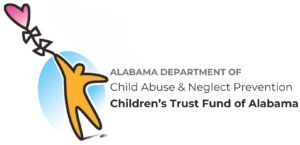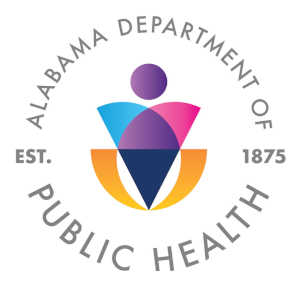Alcohol has been the most widely abused substance in the United States for a long time, but alcohol abuse hit levels never seen before in the wake of the COVID-19 pandemic. Studies show that more than 60% of participants reported increased drinking compared to pre-COVID-19. The most widely cited reasons for increased drinking were increased stress, increased alcohol availability, and boredom.[1]
Alcohol may be able to relieve stress temporarily, but it is only a quick fix. Unfortunately, more and more people have been turning to alcohol to cope with feelings of stress, loneliness, anxiety, and isolation associated with the pandemic. This has caused a new, popular form of drinking to gain recognition: gray area drinking.
Understanding “Gray Area Drinking”
The term “gray area” has been used for decades. If you are “in the gray area,” your behaviors aren’t necessarily bad or outwardly harmful, but they don’t align with the social norm, either.

When it comes to drinking alcohol, there are many different drinking styles. For example, moderate drinking is defined as drinking no more than two drinks a day for men and one drink a day for women.[2] Moderate drinking is considered relatively safe, and the best way to avoid the risks of alcohol abuse without abstaining completely. Other drinking styles aren’t so safe, though.
More risky drinking styles include binge drinking, which causes extreme intoxication, and heavy drinking, which can take a serious toll on your physical and mental health. However, a new drinking style emerged during the pandemic, and it falls somewhere between “acceptable” or “social” drinking and a drinking problem. This drinking style is known as “gray area drinking.”
Another way to describe gray area drinking is the space between two extremes, with one extreme being social drinking and the other extreme being “rock bottom.”
Signs and Symptoms of Gray Area Drinking
If you are a gray area drinker, you may have questioned whether or not you had a problem with alcohol but weren’t able to say yes because your drinking hasn’t quite caused serious problems in your life–yet. Gray area drinking can quickly escalate into something more serious, so it’s important to be able to recognize the signs and symptoms.
You may be a gray area drinker if you:
- Can stop drinking for a period, but find it difficult to stay stopped unless you have a serious reason to.
- Feel like you are drinking heavily, but your friends and family aren’t concerned because your behaviors don’t seem problematic.
- Alternative back and forth between thinking you can control your drinking and wondering if you have a problem with alcohol.
- Get anxious or irritable if you can’t drink for some reason, but don’t experience intense cravings or symptoms of withdrawal.
- Have begun drinking alcohol to cope with stress, but don’t meet the diagnostic criteria for an alcohol use disorder.
- Ritualize your drinking, for example, religiously participating in “wine-o-clock” or “paint-and-sips” every day.
According to Psychology Today, “Gray area drinkers do not have a physical dependency on alcohol but may drink in non-social situations and wonder why.” Also, ‘Gray area drinkers often experience ‘hangxiety’—the anxiety that comes with heavy alcohol use coupled with the physical effects of a hangover.”[3]
Is Gray Area Drinking Dangerous?
The truth is, there is no safe amount of alcohol. The closest thing to safe drinking is drinking in moderation. Gray area drinking typically involves more than moderate drinking, which can be dangerous. It is particularly dangerous if you are drinking to cope with distressing emotions like anxiety or stress. Relying on alcohol to cope with an undesirable emotion is known as self-medication and is often how addictions to drugs or alcohol develop.

In the rooms of Alcoholics Anonymous (AA), members describe alcoholism as a “progressive disease.” This is because very few people become alcoholics after drinking once, twice, or even three times. Many people start drinking socially and are able to control their drinking, but, over time, they begin to rely on alcohol more and more to feel comfortable in social situations, cope with their emotions, and manage stress. Eventually, alcohol becomes a necessity in life rather than something a person wants or enjoys.
In other words, gray area drinking can be a stepping stone toward addiction to alcohol.
The risk of developing an alcohol use disorder isn’t the only reason why gray area drinking is dangerous. Gray area drinking can also be dangerous because drinking alcohol in excess can harm your mental and physical health. Not only will it not make the stressful things in your life disappear, but it can also make stress, anxiety, and depression worse.
People who abuse alcohol are at an increased risk of:[4]
- Car accidents
- Accidental injury
- Liver disease
- Heart disease
- Gastrointestinal issues
- Certain types of cancer
Signs Your Drinking Has Gone Beyond Gray Area Drinking
When something is in the gray area, it is neither right nor wrong. However, that also means it can be difficult to tell when your drinking has become a true problem. So, how do you know when it’s time to get help for a drinking problem? Signs include:
- Experiencing symptoms of withdrawal when you stop drinking.
- Lying to friends and family about your drinking patterns.
- Family expressing concern about your drinking patterns.
- You find yourself craving alcohol throughout the day or obsessing over drinking.
- You have tried to stop, cut back, or moderate your drinking but are unable to do so.
- Once you start drinking you feel out of control and can’t stop drinking.
- Continuing to drink despite problems your alcohol intake is having on your life.
If you have a gut feeling that your drinking has turned into a problem, it’s a good idea to trust that feeling. Consider speaking with your doctor or a trusted counselor about your treatment options.
References:









